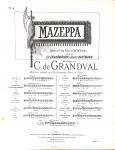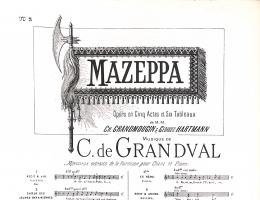
Clémence de GRANDVAL
1828 - 1907
Composer, Singer
The youngest daughter of an aristocratic family from the Sarthe département, the young Clémence de Reiset benefited from the artistic activities organised by her parents – an amateur pianist mother and amateur writer father – in their chateau. There she mixed with figures like the German composer Flotow, who taught her the piano, and Frédéric Chopin, who was to remain a constant source of inspiration for her. She only really studied composition after her marriage to Charles-Grégoire de Grandval in 1851, when she had lessons with Camille Saint-Saëns. From the 1850s, she made a considerable name for herself as a composer: her Deuxième Grand Trio for violin, cello and piano was published by Heugel in 1853 and both her Messe and her Stabat Mater entered the repertory of many churches. Despite this, she turned her sights on the stage between 1859 (Le Sou de Lisle)and 1869 (Piccolino), generally writing her operas under various pseudonyms. During the 1870s, she took an interest in instrumental music and became involved in the Société Nationale de Musique. Her influence on Parisian musical circles, within the context of concert societies or aristocratic salons, was at its height during these years. The performance of her Oboe Concertoop.7 at the Société des Concerts du Conservatoire can be regarded as a symbol of this success, which was also recognised by her receipt of the Prix Rossini in 1880 (for the oratorio La Fille de Jaïre) and the Prix Chartier (1890) awarded for her entire chamber music output. Clémence de Grandval’s last major composition was the opera Mazeppa, premiered in Bordeaux in 1892.
Focus
Focus











